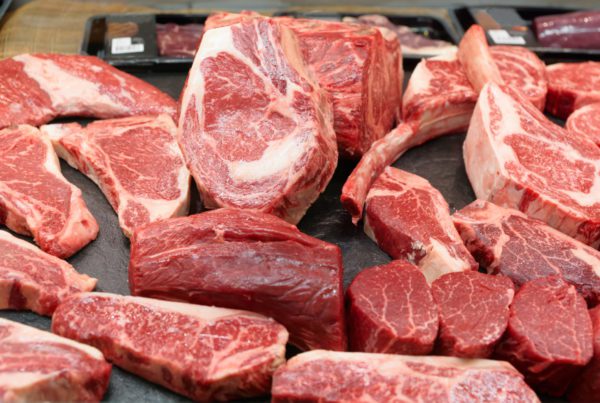Lately we’ve been looking closely at meat and protein exports as they’re inextricably wrapped up in the news surrounding the coronavirus pandemic. Both the meatpacking industry and the meat export industry are being hit hard right now as farmers work to get their herds to processing and then distributed. Because packaging is a key point in the supply chain, the closure disrupts both domestic meat supplies, as evident in climbing prices and grocery shortages / purchase quotas; but also meat exports since the cuts we export are often different from the cuts we purchase domestically. All cuts from one animal, headed different places, stopped before they can even be separated.
Meat exports have been on the rise in the US since 2019 with pork exports exploding 26% higher than in years past, directly to China who dealt with African Swine flu wiping out over 40% of hogs. Most exported pork is pig feet, snouts and organs which aren’t in high demand domestically. Chicken feet are another popular export though they’re not popular at home. The export of these lesser requested parts prevent waste as more of the animal is used. As export demand increases, it helps meet the domestic demand for the other parts, keeping the system in balance.
According to ABC News, in the first quarter of 2020:
- Pork exports up 40%
- Beef exports up 9%
- Chicken exports up 8%
Protein exports aren’t going away anytime soon and are expected to continue to climb especially once the processing plants are back at full capacity. Commodity Forwarders has built out a robust, domestic trucking network that can reach plants anywhere in the United States to collect chilled or frozen beef for transit by air or sea. Our offices and agents in key gateway cities such as Chicago and Dallas offer ready access for beef processed anywhere in the Midwestern US. For more information about how CFI can get your beef to the nearest airport and seaport to buyers overseas or moved domestically to meet the current grocery needs, contact your CFI representative.



